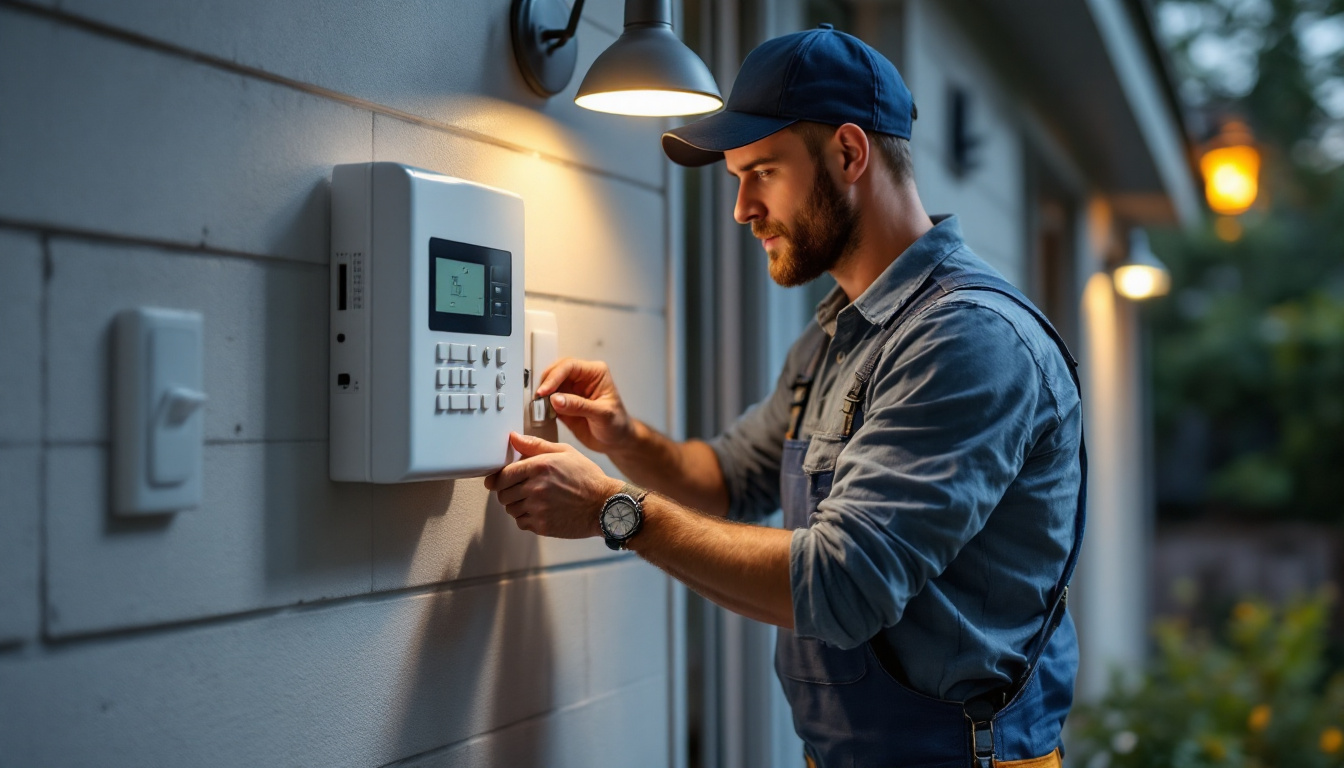

As outdoor lighting systems become increasingly sophisticated, so too does the need for proper compliance with regulations and standards. For lighting contractors, understanding the intricacies of outdoor timer switches is essential for ensuring both functionality and adherence to legal requirements. This article delves into the critical aspects of outdoor timer switches, focusing on compliance, installation best practices, and the implications for contractors in the field.
Outdoor timer switches are devices designed to control the operation of outdoor lighting systems based on a predetermined schedule. These switches enable homeowners and businesses to automate their lighting, enhancing convenience and energy efficiency. However, the selection and installation of these devices must align with specific compliance standards to ensure safety and effectiveness.
There are various types of outdoor timer switches available in the market, each with unique features and functionalities. The most common types include mechanical timers, digital timers, and smart timers. Mechanical timers are straightforward and often less expensive, while digital timers offer more precise control and programming options. Smart timers, on the other hand, integrate with home automation systems, allowing for remote control and scheduling via smartphones or other devices.
Understanding the differences between these types is crucial for contractors when recommending solutions to clients. Each type has its advantages and limitations, and the choice often depends on the specific needs of the installation site. For instance, mechanical timers might be ideal for simple setups where budget constraints are a priority, while smart timers could be more suitable for tech-savvy homeowners looking for advanced features like geofencing or integration with voice assistants. This diversity in options allows for tailored solutions that can cater to varying preferences and requirements.
When selecting outdoor timer switches, several features should be taken into account. These include the timer’s maximum load capacity, compatibility with various lighting types (such as LED or incandescent), and weather resistance ratings. Additionally, features like programmable settings, manual override options, and ease of installation can significantly impact the user experience.
Contractors should also consider energy efficiency ratings, as many modern outdoor timer switches are designed to minimize energy consumption while maximizing performance. Understanding these features will enable contractors to make informed recommendations that meet both client needs and regulatory requirements. Furthermore, some outdoor timer switches come equipped with dusk-to-dawn sensors, which can automatically turn lights on at sunset and off at sunrise, providing an additional layer of convenience and energy savings. This feature is particularly beneficial for enhancing security in residential and commercial properties, as it ensures that outdoor areas are consistently illuminated during the night when they are most vulnerable.
Moreover, the installation process can vary significantly between different types of outdoor timer switches. While some may require a simple plug-and-play setup, others might necessitate more complex wiring and configuration. It is essential for contractors to assess the existing electrical infrastructure and determine whether additional modifications are needed to accommodate the chosen timer switch. This consideration not only ensures a seamless installation but also contributes to the longevity and reliability of the lighting system as a whole.
Compliance with local, state, and national regulations is a critical aspect of installing outdoor timer switches. These standards are designed to ensure safety, reliability, and energy efficiency in electrical installations. Failure to adhere to these regulations can lead to safety hazards, legal repercussions, and costly rework.
The National Electrical Code (NEC) provides comprehensive guidelines for electrical installations, including outdoor lighting systems. Specific sections of the NEC address the installation and use of timer switches, emphasizing the importance of proper wiring, grounding, and protection against environmental factors.
For instance, NEC Article 410 outlines requirements for luminaires, including those controlled by timer switches. Contractors must ensure that all installations comply with these guidelines to avoid potential hazards and ensure the longevity of the lighting systems. Furthermore, adherence to NEC standards not only enhances safety but also contributes to energy efficiency, which is increasingly becoming a priority in modern electrical installations. By utilizing timer switches that comply with NEC, homeowners and businesses can significantly reduce their energy consumption and lower their utility bills.
In addition to national standards, local building codes may impose additional requirements for outdoor timer switch installations. These codes can vary significantly from one jurisdiction to another, making it essential for contractors to stay informed about the regulations in their specific areas.
Local codes may dictate the types of materials that can be used, installation methods, and even the types of timer switches that are permissible. It is advisable for contractors to consult with local building authorities or code enforcement agencies to ensure compliance and avoid potential fines or penalties. Moreover, local regulations often reflect the unique environmental conditions and community standards of an area. For example, regions prone to extreme weather may have stricter requirements for weatherproofing and durability of outdoor installations, ensuring that timer switches can withstand harsh conditions while maintaining functionality. Understanding these nuances can not only help in compliance but also enhance the overall performance and reliability of the electrical systems being installed.
proper installation of outdoor timer switches is crucial for ensuring their functionality and compliance with relevant standards. Following best practices not only enhances the performance of the lighting systems but also minimizes the risk of future issues.
Before installation, a thorough site assessment is essential. Contractors should evaluate factors such as the layout of the lighting system, the location of power sources, and potential environmental challenges. Understanding these elements will help in selecting the appropriate timer switch and determining the best installation method.
Additionally, assessing the specific needs of the client, such as desired lighting schedules and control options, will inform the selection process and ensure a tailored solution.
Proper wiring is a critical aspect of outdoor timer switch installation. Contractors must ensure that all connections are secure and comply with NEC guidelines. Using weather-resistant materials and components is essential to protect against moisture and environmental wear.
It is also important to consider the load capacity of the timer switch and ensure that it matches the requirements of the connected lighting fixtures. Overloading a timer switch can lead to malfunctions and pose safety hazards.
After installation, thorough testing of the outdoor timer switch is vital. Contractors should verify that the timer operates correctly according to the programmed schedule and check for any potential issues with the lighting fixtures. This step not only ensures client satisfaction but also helps in identifying any compliance-related concerns before the system is put into regular use.
As energy efficiency becomes a priority for many homeowners and businesses, outdoor timer switches play a significant role in promoting sustainable practices. By automating lighting schedules, these devices help reduce energy consumption and lower utility bills.
Implementing energy-efficient lighting solutions, such as LED fixtures paired with outdoor timer switches, can lead to substantial savings. LEDs consume significantly less energy than traditional incandescent bulbs and have a longer lifespan, making them a cost-effective choice for outdoor lighting.
Moreover, when combined with timer switches, energy-efficient lighting can be programmed to operate only when needed, further reducing unnecessary energy use. This not only benefits the environment but also aligns with the growing demand for sustainable solutions in the construction and lighting industries.
Many local and state governments offer incentives for energy-efficient installations, which can be an attractive selling point for contractors. These incentives may include rebates, tax credits, or grants for projects that incorporate energy-saving technologies.
Contractors should stay informed about available incentives and communicate these options to clients. By highlighting the financial benefits of energy-efficient outdoor lighting systems, contractors can enhance their value proposition and encourage more clients to invest in sustainable solutions.
While the benefits of outdoor timer switches are clear, contractors may face challenges during installation and compliance. Understanding these challenges and proactively addressing them can lead to smoother projects and satisfied clients.
Outdoor installations are inherently exposed to various weather conditions, which can impact the performance and longevity of timer switches. Rain, snow, and extreme temperatures can affect both the timer switch and the connected lighting fixtures.
To mitigate these issues, contractors should select timer switches with appropriate weather resistance ratings and ensure that all components are adequately protected from the elements. Proper placement of the timer switch, such as under eaves or in sheltered locations, can also help prolong its lifespan.
Educating clients about the operation and maintenance of outdoor timer switches is crucial for ensuring long-term satisfaction. Many clients may not fully understand how to program or adjust the settings of their timer switches, leading to frustration and potential misuse.
Contractors should take the time to explain the features and benefits of the selected timer switch, as well as provide guidance on how to troubleshoot common issues. This proactive approach can enhance the client experience and foster long-term relationships.
Outdoor timer switches are invaluable tools for enhancing the functionality and efficiency of outdoor lighting systems. For lighting contractors, understanding compliance standards, installation best practices, and the benefits of energy efficiency is essential for successful projects.
By staying informed about regulations and embracing sustainable practices, contractors can position themselves as knowledgeable professionals in the field. As the demand for automated and energy-efficient lighting solutions continues to grow, those who adapt and educate themselves will thrive in the evolving landscape of outdoor lighting.
Ultimately, the integration of outdoor timer switches not only benefits clients through enhanced convenience and savings but also contributes to a more sustainable future. The role of lighting contractors in this process is pivotal, making it imperative to stay abreast of developments in technology, compliance, and best practices.
Ready to elevate your outdoor lighting projects with compliance and energy efficiency in mind? Look no further than LumenWholesale for your outdoor timer switch needs. Our selection of spec-grade lighting products promises the quality and performance you require, at prices that respect your bottom line. Say goodbye to middleman markups and hello to unbeatable wholesale value. Plus, with free shipping on bulk orders, you can stock up on the best lighting solutions without worrying about extra costs. Don’t compromise on quality or price. Wholesale Lighting at the Best Value is just a click away. Make the smart choice for your business and your clients with LumenWholesale today.

Discover the must-have essentials for lighting contractors working with industrial lamp kitchens.

Discover essential insights into grow lights tailored for lighting contractors.

Discover the essential role of strategic lighting in warehouse operations.

Discover how LED bulb lights revolutionize safety in lighting installations.
Get notified when NEW deals are released.
Optimize your budget with wholesale discounts.
Only top-quality, specification-grade lighting products.
No additional costs at checkout - what you see is what you pay.
We understand the unique needs of contractors.